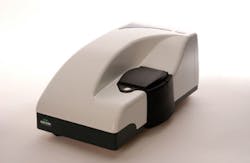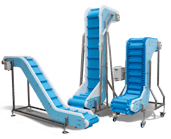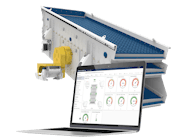The benefits of using zeta potential measurement to determine water-treatment plant-control strategies have been extensively documented. Zeta potential is a measure of the charge on particles in a system and is known to correlate with coagulation performance. It’s already used for quality control and to optimize chemical flocculent addition.
Even more intriguing, however, is the idea of using zeta-potential as part of "on-line" continuous process monitoring and eventually, automated process control.
Zeta potential monitoring benefits are illustrated by the experiences of Aurora Water, water treatment utility for Aurora, Colorado. One Aurora Water facility uses zeta potential as both an off- and on-line tool. Results show how on-line technology can reduce chemical usage costs and simplify process operation, leading to energy and other type savings.
Aurora Water provides water for about 340,000 people and has three water purification facilities in the metro Denver-Aurora area. Aurora has a tradition of working with suppliers to beta test innovative equipment. A member of the Partnership for Safe Water program, sponsored by the U.S. Environmental Protection Agency, the American Water Works Association and others, Aurora Water plants are perennial winners of industry awards.
Some background
The chemical and physical processes employed at water-purification facilities eliminate harmful organic, inorganic and bacterial contaminants to meet potable-water quality standards. Yet many water purification facilities aren’t able to respond rapidly or efficiently to raw water chemical- or physical-characteristic fluctuation; nor are they able to assess the impact of system alterations on purification performance.
Typical water treatment begins with physical contaminant removal via sedimentation. Gravity separates out suspended material. In other words, once particles reach a certain mass, the gravitational forces inducing sedimentation are sufficient to offset the surface-chemistry interactions keeping them in suspension. The result is sedimentation of the contaminated material, i.e., its separation to the tank bottom.
The typical size range of suspended materials within untreated water is relatively small (< 1000 µm), making natural sedimentation a lengthy process. Therefore, to make treatment viable, contaminants are "encouraged" to clump together, or coagulate, increasing sedimentation rate to improve process efficiency.
Water impurities tend to be anionic in charge and therefore charge stabilized. That leads to use of positively charged additives, such as aluminum sulfate, cationic polymers and other cationic moieties. Neutralizing the water impurities’ surface charge allows effective coagulation and sedimentation of most contaminating material. Depending on method employed, resulting flocculent either settles prior to filtration or is transferred direct to filtration.
Maintaining initial coagulation and flocculation, given variable raw water quality, is crucial for optimizing treatment and ensuring safety. Floc impacts the downstream process: a floc with poor characteristics can break up, resulting in carryover on filters, greater particle loads, turbidity breakthrough and reduced filter run times. Well-maintained flocculation reduces chemical.
What it takes is a relevant measurement technique for process monitoring that enables timely and effective control.
Answers of the past
Historically, water-treatment facilities monitor flocculation with "jar tests" that take two hours to perform. A jar test simulates the coagulation process. A water sample is dosed with a concentration of coagulant. The floc formation is then assessed under standard conditions. This analysis gives a relative indication of plant performance but is highly subjective and, like all manual techniques, subject to operator-to-operator variability. Furthermore, practicalities dictate that jar testing misses rapid changes in contaminant concentration. The technique may offer little on how to optimize chemical usage following poor results.
Consequently, jar-test use often results in a tendency to overdose the water to ensure regulatory compliance, even in the event of rapidly changing seasonal variations in water composition. Considering flocculent costs, this is unsatisfactory. In addition, overdosing contaminants can reverse the surface charge, thereby building a particle-surface cationic charge and re-stabilizing the water contaminants.
Turbidity tests also can assess and control organic-matter presence, doing so by measuring cloudiness as a quality indicator. Highly turbid solutions can cause filtration-system blockages. Even low turbidity prevents effective tertiary chlorination treatment. Turbidity meters and bench turbidity make this measurement. However, they don’t deliver feedback or predictions to improve in-situ water treatment. Nor are they relevant for an industry transitioning from manned to unmanned operations.
On the other hand
Zeta potential measurement assesses stability in colloidal systems and is increasingly used to monitor water-treatment flocculation. Laboratory-based electro-phonetic light-scattering zeta potential measurements are not subject to the operator-to-operator variability. Data indicates how process change will improve performance.
Zeta potential measures the magnitude of electrostatic or charge repulsion between particles at the boundary layer surrounding the particle, rather than on the particle itself (see figure 1). Two layers of ions surround particles within a solution, the tightly bound inner Stern layer and the outer diffuse layer, where ions are less firmly associated. Within the diffuse layer there is a notional boundary beyond which the particle is exerting little influence. This marks the edge of the boundary layer. When a particle moves, as a result of Brownian motion or gravity, ions within this boundary move with it. Beyond this border ions remain stationary within the bulk dispersant.
Zeta potential therefore quantifies the balance of repulsive and attractive forces that the particles experience as they approach one another. At a zeta potential near zero, a system is unstable and highly prone to aggregation. A pronounced negative or positive zeta potential (+/-30 mV), on the other hand, is indicative of an electro-statically stable system that will resist particle aggregation. Monitoring the zeta potential of water treatment streams therefore provides a way of maintaining optimal conditions for flocculation. Typical raw water zeta potential is around -15 mV and not naturally prone to aggregation.
Some water treatment plants have used lab-based zeta potential measurements for several years. A growing body of literature supports its application in this area. For example, a team at Severn Trent Water in the U.K. has published several reports on the use of zeta potential for controlling flocculation conditions, particularly in relation to natural organic matter removal.
Algal matter concentration and character tend to be in a constant state of flux and their coagulation is particularly difficult to control. Researchers at the University of South Wales found that keeping zeta potential within a window of between -5mV and +5mV promoted the efficient removal of organic matter, clay and, crucially, algal particles. It was also found that during seasons when algae is the major pollutant, coagulation and removal could be successfully achieved by operating at pH7 and extending the zeta potential operating window to -15mV.
Zeta potential is measured by applying an electric field across a dispersion sample. Particles within the dispersion, with a zeta potential, migrate toward the electrode of opposite charge at a velocity proportional to the magnitude of that zeta potential.
The velocity at which the particle moves is measured using laser Doppler anemometry. The frequency or phase shift of an incident laser beam caused by the moving particles is measured to determine particle mobility. This is converted into zeta potential values, using knowledge of dispersant viscosity, through the application of Smoluchowski or Huckle theories.
It’s all about on-line
While zeta potential is already widely used by those at the forefront of water treatment as a lab-based technique, advancements that bring it on-line, as a process analyzer, are welcome.
The water industry is keen to access on-line measurement and move towards automated coagulant dosing. Streaming current detectors (SCD) on the process line are used this way within many treatment facilities, albeit with varied levels of success. They work by immobilizing a charged particle and measuring the electric current produced as charged particles within the water flow past it, i.e., the streaming current. The detectors draw in water from a sample point and with electrodes measure difference in potential between the stationary and mobile components.
This method should help regulate and control coagulation, with the streaming current correlating, if not directly comparing with, zeta potential. However, in practice, many operators find these systems inaccurate and unreliable, lacking sensitivity and requiring high maintenance. Crucially, many variables can affect the charge measurement, leading to erratic readings, particularly at high flocculent concentration. Many water treatment facilities consider SCD an inherently flawed technique and too subjective to rely upon for process control.
Robust and sensitive on-line zeta potential measurement is a potential solution to the problem of automated flocculation monitoring. Initial trials conducted with the Zetasizer Nano from Malvern Instruments have demonstrated the feasibility of this approach.
At Aurora Water
The Aurora Water treatment facility has been using an online zeta potential system from Malvern Instruments since early in 2012 to monitor the performance of its plant.
The online Zetasizer Nano is integrated into the water purification process, as illustrated in Figure 2. Water from the process line is pumped into the sampling loop at a controlled flow rate and directed, through an automated system of filters and valves, to a header tank, which ensures a constant analyzer sample supply. Post measurement, samples are disposed of to open waste. A series of automated valves enables analyzer system bypass and drainage, as required, for operational maintenance.
The system is reliable and produces useful operational data. It is more sensitive and informative than alternatives such as SCD, and measurement frequency allows quick response to process changes. Adjusting chemical dosage rates to maintain zeta potential close to zero, within the range +3mV to -3mV, proves effective strategy for flocculation control. If zeta potential goes negative, chemical dosage rates are increased to restore it to around zero and likewise chemical additions are reduced if zeta potential shifts towards the positive.
A lab-based Zetasizer runs the on- and off-line systems in tandem. Data received from the on-line system are corroborated by the lab-based Zetasizer. The high measurement frequency and instantaneous feedback unit presents an opportunity for advanced plant control, reduced labor costs and optimized chemical dosing.
Troubleshooting and efficiency
In February 2013, the plant suffered a major PLC fault. Once the problem was fixed, the plant was reset and operation continued. Immediately following the outage, however, the on-line zeta potential measurements became strongly positive (see figure 3), a result that was confirmed by off-line laboratory analysis. Further evidence of a developing problem was an increase in suspended particles that led to the filters being taken off on breakthrough.
With no indication that water physical or chemical characteristics had changed, it was assumed the indicated water-flow rate was higher than the volume actually coming into the plant, causing the ratio of chemical addition to water to be overly high and account for the positive zeta potential reading. Coagulant concentration was therefore lowered to bring zeta potential back to neutral.
This initial change seemed to move the plant in the right direction and further reductions were made. Overall coagulant addition was reduced by 17%, relative to pre-PLC shutdown levels, and this brought zeta potential back close to zero. At the same time, effluent particle concentrations dropped back to pre-shutdown values, turbidity readings improved and filter run times became longer, all confirming a plant moving back towards a better operating regime.
Further investigation of the water flow rate produced evidence that the water rate had not changed significantly pre- to post-shutdown. At the same time, it was determined that the rapid mixer used to stimulate flocculation had been left off, in manual mode, following the PLC reboot. This was switched back on and a strong negative shift in zeta potential was immediately observed.
This brief experiment suggested that rapid mixing was in fact detrimental to coagulation, resulting in more chemicals addition than would otherwise be required. This finding is supported by evidence from the published literature that slower flocculation can be beneficial. The decision was therefore made to leave the rapid mixer off, saving energy and chemicals.
The on-line system quickly picked up the initial zeta potential change and also tracked the negative shift when the mixer was turned back on — real-time information needed for the efficient plant-performance investigation.
The problems might have eventually manifested themselves in filtration problems, but the online measurement allows rapid adjustments without upsetting plant performance.
Final comments
By using on-line zeta potential, Aurora Water decreased chemical coagulant usage by around 17 percent while at the same time eliminating the need for a rapid mixer and the energy consumption associated with it.
Research suggests that zeta potential measurement can be important to water treatment. Already used in the laboratory the promise of on-line measurement is especially compelling as it leads to automated monitoring and optimized plant control. Online zeta potential analysis is part of a growing trend toward developing proactive, as opposed to reactive, water treatment methodologies.
Experience shows the Zetasizer Nano can be used for automated online zeta potential measurement. The technology is especially useful in responding to sudden changes in raw water quality and for troubleshooting.
References
- R. Henderson, S. Parsons, B. Jefferson, "Zeta Potential: a tool for the successful control of coagulation and removal of Microcystis aeruginosa in water treatment plants," presentation delivered at The University of South Wales, August 12 2009.
- Dentel, K. Kingery, "AWWA research foundation report: Evaluation of Streaming Current Detectors," pp. 25,
- S. Dentel, A. Thomas, K. Kingery, "Evaluation of the streaming current detectors II: Continuous flow tests," Water Research, Volume 23, Issue 4, April 1989, pp. 423–430
- A. Adgar, C. Cox, C. Jones, "Enhancement of coagulation control using the streaming current detector," Bioprocess and Biosystems Engineering, August 2005, Volume 27, Issue 5, pp. 349-357.
- A. Amirtharajah and Kirk M. Mills, "Rapid-mix design for mechanisms of alum coagulation," Journal AWWA, April 1982, pp 210-216.
- James K. Ezwald, "Coagulant mixing revisited: theory and practice," Journal of Water Supply: Research and Technology-AQUA / 62.2/ 2013, pp 67-77.
Bill Fulbright is a plant operator, Hart Krumrine is chief plant operator and Kirk Watson is water treatment superintendent at Aurora Water. Alon Vaisman is product development manager, process systems and Ana Morfesis is technical/scientific advisor with Malvern Instruments.
Malvern Instruments, Malvern, U.K., says it provides the materials, biophysical characterization technology and expertise that enable scientists and engineers to understand and control the properties of dispersed systems.


